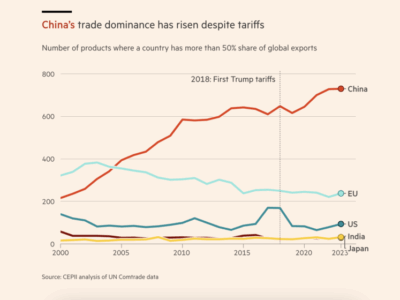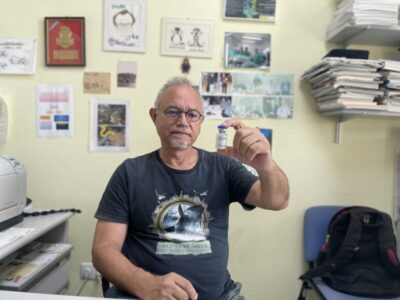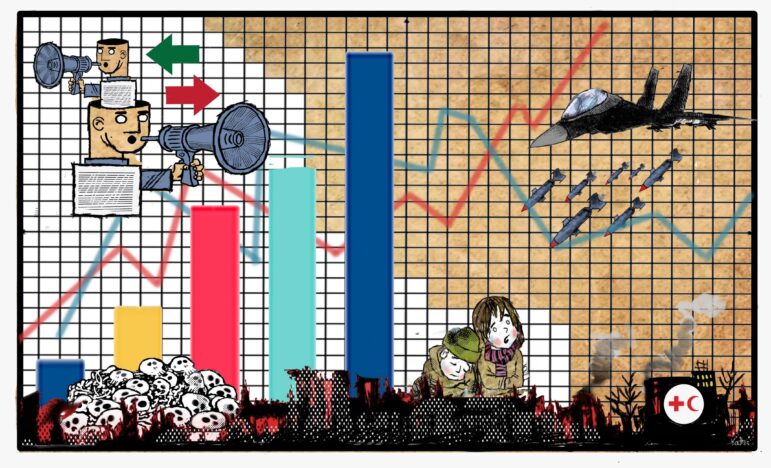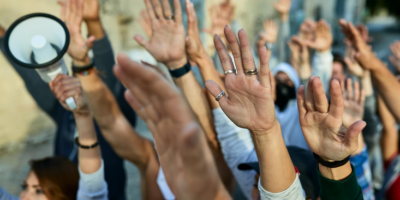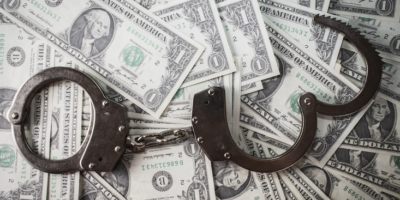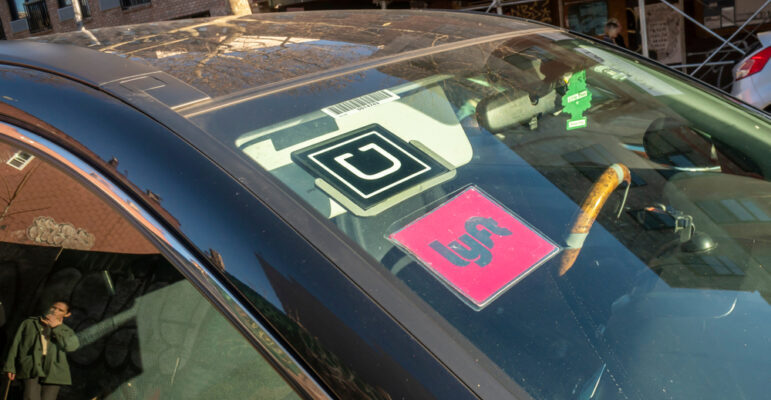
In the summer of 2024, Uber and Lyft drivers in New York City found themselves locked out of their apps. The lockouts occurred unpredictably, often lasting hours at a time. Suddenly, drivers who counted on the apps for full-time work found themselves unsure of when they would be able to earn income on these platforms, or how long they’d have to work to make up for unexpected time offline.
The gig economy had always prided itself on offering workers flexibility; this situation was anything but.
While drivers were despondent over lockouts and organized several protests throughout the summer, there was no public information about the pervasiveness of the practice. So Bloomberg News crowdsourced screenshots from nearly 900 drivers, monitored surge pricing across the city and ran financial models to reveal the impact this unprecedented labor practice had on drivers in New York.
Central to our investigation was how we crowdsourced data from drivers. Bloomberg built a custom WhatsApp tipline for drivers to submit screenshots of lockouts and talk to reporters. Upon their first message with the tipline, drivers were informed of who made the tipline and its purpose, along with examples of data that we hoped they would share. Most importantly, the tipline helped connect reporters to over 100 willing sources who provided details about their lived experiences with lockouts and additional data we hadn’t originally requested.
Lockouts were a corporate reaction to a local law that was actually meant to ensure fair pay for the drivers. New York City has a unique minimum-pay formula for rideshare drivers that was written to compensate them even when working during periods of low demand.
The city’s minimum wage formula is built around a productivity metric that is recalculated annually. If drivers spend more time waiting for passengers between trips, the productivity metric decreases and minimum payments would increase for the next year. To prevent paying higher wages, Uber and Lyft started erasing idle times by preventing drivers from using the apps, creating a loophole that artificially inflated the productivity metric and deflated future wages.
Bloomberg’s investigation found that Uber and Lyft locked out drivers practically every hour of every day, even during peak hours when Uber told drivers they’d be able to work. Lockouts frequently occurred in surge zones, when demand for rides exceeds the supply of drivers and prices go up for customers. We ran a financial model using six months of historical trip data under hypothetical changes to the city’s minimum-pay formula to estimate that each company withheld millions in wages from drivers.
How We Built a WhatsApp Tipline to Crowdsource Data
During a protest outside of Uber’s Manhattan office in June, drivers told Bloomberg reporters Natalie Lung and Evan Gorelick how they spent hours of unpaid time refreshing their apps and driving around the city trying to get back online.
The only people who know when a lockout occurs are the rideshare company and the driver. Drivers had sent Lung and Gorelick screenshots of what they saw from the apps when they were not allowed to work. These screenshots appeared to be the only evidence of lockouts, so we needed to find a way to collect them at scale.
We drew inspiration from previous methodologies on labor in the gig economy to build a blueprint for our approach. For an investigation at Jalopnik, Dhruv Mehrotra and Aaron Gordon asked drivers to send receipts from Uber and Lyft to calculate drivers’ take-home pay from 14,000 rides using a web form. Similarly in 2022, MIT researcher Dana Calacci had built an SMS chatbot to analyze receipts to study the pay model for Target’s gig workers.
Luckily for us, Calacci’s SMS chatbot is open source and Gordon had just started a new job at Bloomberg.
Based on these past approaches, the team (now including Gordon) realized that crowdsourcing was the only way to get data on lockouts. Lung and Gorelick knew drivers were active WhatsApp users, as drivers used the encrypted messaging service to share screenshots of lockouts with each other and discuss working conditions. The rideshare community is tight-knit and highly engaged, as the majority of drivers work full-time in New York CIty.
Choosing to crowdsource data with WhatsApp helped us meet sources where they are, as rideshare drivers’ work is mediated through mobile and many drivers already use WhatsApp.
Over the course of the next three days, I developed a prototype using Twilio – a service that helps build SMS and WhatsApp chatbots. Our application’s primary function was to accept screenshots when drivers were locked out. We programmed the application to show new users an annotated example of a screenshot to promote standardization, and developed a brief intake survey to help reporters verify screenshots. The survey included questions about when the lockout occurred and the company that was responsible.
We worked with a small focus group within NYTWA – a local labor group, to test the application and figure out exactly how we’d handle their submissions.
We narrowed the focus of our questions to streamline the intake survey. We wanted to ask about drivers’ location when they were locked out, but asking drivers to drop location pins or type cross streets seemed unreasonable as most drivers are short on time and in their vehicles when they are locked out. Further, Gordon’s past investigation into rideshare fares suggested freeform text submissions would be largely unusable.
We simplified the submission process by asking straightforward questions that could be answered by pressing buttons. This feature is integrated into WhatsApp, and reduces the time needed to submit data.
Buttons need to be vetted and require WhatsApp’s approval. Unfortunately our buttons were flagged by Meta’s content moderation algorithm and our account was frozen. To make matters worse, we were not told how we had violated their terms of service, which we didn’t seem to be breaking. After we appealed the decision, our status was resolved after a few days. Still, we were never given an explanation and the entire process involved zero human interaction.
A pro engineering tip from Calacci’s experience developing an SMS bot was to create two accounts on Twilio for development and production. This backup account allowed us to experiment with new features to gauge any potential hurdles before rolling out the changes to users.
You can interact with the developer version of our WhatsApp tipline here: +1-646-606-2454 or wa.me/16466062454. Note this application doesn’t save any data.
Getting the WhatsApp Tipline to Drivers
After a week with the focus group, we opened up the application to all drivers. We encouraged existing participants to share the tipline. Reporters also posted on social media and web forums where drivers congregated online, and handed out fliers in parking lots.
Within the first few days of going live, we were overwhelmed with submissions. A byproduct of simplifying the intake process for drivers meant reporters had more work to do to confirm a lockout had occurred.
Gordon led a team of six reporters to annotate each screenshot. We verified the company responsible for each lockout, and checked that the time on the screenshot was comparable to when we had received it. We discarded unusable screenshots if we couldn’t confirm the date and time or if the screenshot was not of a lockout. For consistency Gordon and Yin double-checked annotations.
Although we didn’t ask drivers for their location, we still wanted to report on where lockouts occurred and their impact on consumer pricing. To do this, we collected surge pricing from 83 fixed addresses across the city every 10 minutes using the pricing aggregator Obi. We merged the pricing data to our crowdsourced data to see if the lockout occurred in the proximity of a surge zone.
Our Findings
During the three weeks we collected data from mid-August to September, we received over 7,300 screenshots from nearly 900 drivers (roughly 1% of all registered drivers in the city). We also heard from 119 drivers who were willing to be interviewed for our story. We aggregated how often lockouts occurred and found clear temporal patterns.
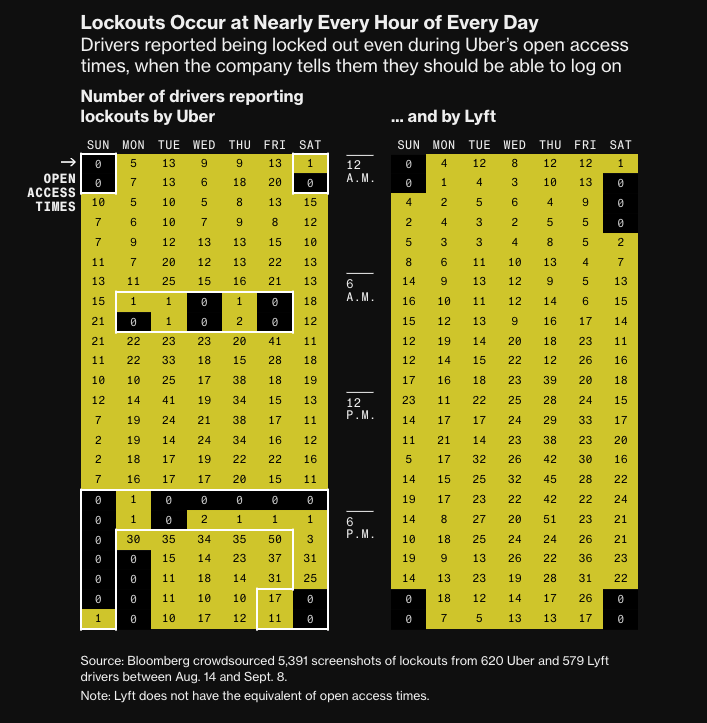
Image: Courtesy of Denise Lu, Bloomberg News
Lockouts occurred practically every hour of every day. We also found that Uber locked out 81 drivers during specific time windows that they guaranteed would be open for accepting passengers across 109 separate occasions.
We found over 430 lockouts occurred in the proximity of a surge zone. This included during peak hours and busy events such as the US Open. In nearly half of those cases, surge pricing increased after a lockout occurred.
Ordinarily, finding affected sources is the most time-consuming part of a data investigation. Our automated tipline provided an easy way for sources to speak with a reporter. We programmed special commands in the WhatApp bot, including “TALK,” which connected drivers to a reporter. Lung interviewed nearly 120 drivers who found us through the “TALK” function. Many of these drivers became tipline super users, and shared additional information with reporters that we did not ask for through the tipline.
Throughout one lockout-permeated day in August, a driver shared voice memos and ride receipts with Lung that was later used by Denise Lu to visualize that driver’s day in data. This graphic illustrated one driver’s personal experience with lockouts, which grounded our statistical findings.
We informed drivers that their screenshots would only be reviewed by reporters and deleted by the end of 2024, which we abided by.
In response to the reporting, neither company denied implementing the lockouts or their impact on drivers in New York City, but said they were necessary. “We agree that lockouts are horrible,” an Uber spokesperson told Bloomberg. “The rule effectively presents us with two choices: restricting access at times of low demand, or kicking drivers off Uber altogether.” Lyft’s response was similar: “This poor experience is why we don’t deploy lockouts anywhere else except in this unique situation, and it’s why we need a long-term fix.”
Impact
Our investigation was cited by New York City’s comptroller and by the US Federal Trade Commission on Uber and Lyft’s business practices. In December, the city’s taxi regulator proposed rule changes that would mandate a fixed minimum pay calculation rather than a dynamic one, an attempt to deter Uber and Lyft from re-introducing lockouts to artificially restrict wages again.
In January 2025, the FTC opened an antitrust probe into whether Uber and Lyft were illegally coordinating to limit driver pay in the city.
Uber stopped lockouts in early September 2024, and Lyft stopped lockouts recently as well.

